WRIST: Marc Cook
MSRP (2014): $12,699
MILES: 14,521
MPG: 41
MODS: Holeshot exhaust, Power Commander, Continental tires
UPDATE: 9
As predicted, the next big maintenance event came around this month. The 14,500-mile service calls for replacement of the engine oil and coolant, as well as the spark plugs alongside various other inspections. Per the manual, Suzuki calls for oil-filter replacement only at 600 and 11,000 miles, but I have been replacing the K&N filter every oil change, at 3,500-mile intervals. After all, it's so easy to work on this bike once the belly pan is removed—all of four bolts—that not changing the filter seems like false economy to me. I'm sure Suzuki's engineers have this all figured out, and maybe I'm just a relic, but I'm going to change filters and oil together. Just try to stop me.
At 14,500 miles, you’re also supposed to check the V-Strom’s valve clearances for the first time. Note that this step is not part of the 600-mile service. It says something about modern metallurgy and manufacturing that inspecting valve clearances is something you do with ever-decreasing frequency.
Good and bad news on this service. First the good: All eight valves were within spec, though all exhausts were on the tight side of the range. Suzuki says 0.2-0.3mm for the exhausts, 0.1-0.2mm for the intakes. My 0.25mm feeler gauge was a too-tight fit into the exhausts but the 0.2mm seemed a little gappy. I’m says it’s just bigger than 0.2mm and calling it a day. All four intakes were at 0.15mm.
Overall, the inspection is pretty straightforward, though you’ll want to drain and remove the radiator for better access. Bad news? Suzuki recommends changing spark plugs at 7,500 and 14,500 miles (repeating every 7,000 miles). In doing some research on the DL engine, I discovered or, probably, just re-remembered that the first-gen DL had similar spark plug-replacement intervals. That wasn’t such a big deal when you’re dealing with two CR8EKs at $10 a pop. But the current DL uses special NGK plugs—LMAR8BI-9—that cost $40. Each. Um, no way. I removed all four, inspected them carefully, and returned them to service. They look great, and the gaps are right on. If this were really my bike there’s no way I’d pop $160 every 7,000 miles for new plugs.
Otherwise, I didn’t find anything broken or missing during this service. The stock paper air filter, which is supposed to be replaced at 11,000 miles, wasn’t because it looked pretty good. Since then, though, the bike has seen more dirt miles and now the filter looks scuzzy. I wanted to experiment with a new K&N filter but they’re currently backordered. One should show up soon.
On to tires, then. The Avon Distanzias lasted just shy of 5,500 miles, with the rear tread down to the wear bars and the front showing moderate cupping. It's interesting: The previous Michelin Pilot Road 4 Trails started to handle oddly before they looked worn out, but the Avons worked well despite evidence of them being done. In their place, Continental's new TKC 70 tires (conti-online.com; $150 front/$195 rear). So far, the Suzuki likes these tires, though steering isn't quite as crisp as it was on fresh Distanzias. They haven't been off road yet, but it'll be interesting to see how they fare.
I got to the bottom of the V-Strom throwing error codes with the Power Commander in place. Turns out I was sent the wrong O2 sensor plugs—the V-Strom needs the O2 Optimizers—so now the Power Commander V (powercommander.com; $380) can be tuned to get the most out of the Holeshot Performance 17-inch slip-on (holeshot.com; $420). How much more? On the dyno, the stock and Holeshot systems are almost identical, with peaks within 0.4 hp and 0.4 pound-feet of torque—the Holeshot makes just that much more. But the pipe boosts torque from 5,000 to 8,000 rpm, sounds great, is delightfully mellow (just 75 dBa at idle and 79 dBa at 2,000 rpm), and is a whopping 6.6 pounds lighter. I like the sound of this setup, but I have to question the economics of spending $800 to get so little extra power.
I’m still fine-tuning the PCV maps and so far have been able to smooth the DL’s on-throttle abruptness, but the sharp trailing-throttle response remains. What’s more, mileage has fallen to 37 mpg over the last two tanks. But I’m not giving up. This version of the Power Commander allows you to run two maps and change via a cockpit-mounted switch. I’m going to wire something up and play with a few slightly leaner maps to see if I can find the right balance between throttle response and mileage.
One last part of the whole tuning thing that had me briefly puzzled. As you know, the Power Commander works by intercepting the signal from the bike’s ECU to the injectors; it can shorten or prolong the signal to hold open the injector, thereby changing the air/fuel ratio. When this happens, the ECU is “ignorant” of what’s happening downstream. So I was surprised when the V-Strom’s on-board economy computer accurately reflected the reduced mileage that was happening. How could it know?
A call to Dynojet gave me the answer. The O2 Optimizers are skewing the stock ECU map slightly rich and the display part sees this. Which also tells me that the fuel computer (instant and average miles per gallon plus range to empty) will remain somewhat accurate as long as I don’t make the Power Commander map too aggressively rich or lean in the cruising realm. So many unintended consequences for one bike!










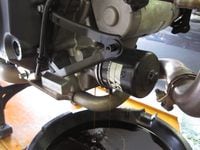

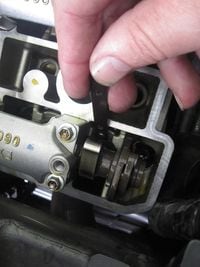

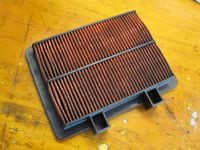

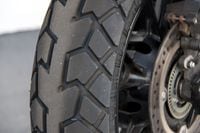
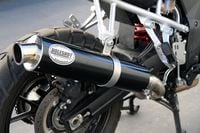


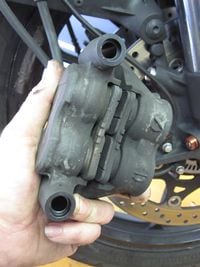
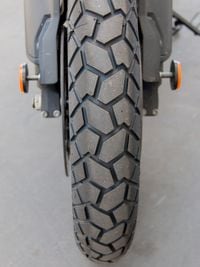

/cloudfront-us-east-1.images.arcpublishing.com/octane/KIX5O23D5NAIBGFXBN3327DKZU.jpg)
/cloudfront-us-east-1.images.arcpublishing.com/octane/7GJYDUIPXRGMTMQKN6ONYOLBOU.jpg)
/cloudfront-us-east-1.images.arcpublishing.com/octane/MUQLOVLL2ZDGFH25ILABNBXKTI.jpg)
/cloudfront-us-east-1.images.arcpublishing.com/octane/TNOU5DNE2BC57MFPMGN2EIDXAM.jpg)
/cloudfront-us-east-1.images.arcpublishing.com/octane/GTCXACQGJ5HAPDTGWUQKDEH44E.jpg)
/cloudfront-us-east-1.images.arcpublishing.com/octane/S35YGSEMEZB4BLTDJTSZPF4GLA.jpg)
/cloudfront-us-east-1.images.arcpublishing.com/octane/5UOT6HPX2JFMRJAX6EH45AR4MQ.jpg)
/cloudfront-us-east-1.images.arcpublishing.com/octane/OKWOJWAKP5EP3OACCRRWPCIX2Q.jpg)
/cloudfront-us-east-1.images.arcpublishing.com/octane/2WF3SCE3NFBQXLDNJM7KMXA45E.jpg)
/cloudfront-us-east-1.images.arcpublishing.com/octane/G4MG6OUCJNBSHIS2MVVOTPX65E.jpg)
/cloudfront-us-east-1.images.arcpublishing.com/octane/IIGGWFOTOJGB7DB6DGBXCCMTDY.jpg)
/cloudfront-us-east-1.images.arcpublishing.com/octane/QSTCM6AVEZA5JJBUXNIQ3DSOF4.jpg)
/cloudfront-us-east-1.images.arcpublishing.com/octane/U4I7G625B5DMLF2DVIJDFZVV6M.jpg)
/cloudfront-us-east-1.images.arcpublishing.com/octane/B6XD6LS6IVCQPIU6HXDJSM3FHY.jpg)
/cloudfront-us-east-1.images.arcpublishing.com/octane/ICL63FEDDRDTTMINYICCEYGMDA.jpg)
/cloudfront-us-east-1.images.arcpublishing.com/octane/FCGZHQXRBZFLBAPC5SDIQLVF4I.jpg)
/cloudfront-us-east-1.images.arcpublishing.com/octane/WNOB6LDOIFFHJKPSVIWDYUGOPM.jpg)

/cloudfront-us-east-1.images.arcpublishing.com/octane/X33NU3E525ECRHXLNUJN2FTRKI.jpg)
/cloudfront-us-east-1.images.arcpublishing.com/octane/6KKT5NNL2JAVBOXMZYS5ZO76YA.jpg)
/cloudfront-us-east-1.images.arcpublishing.com/octane/J5RKG5O455GMPGQRF2OG6LRT7A.jpg)
/cloudfront-us-east-1.images.arcpublishing.com/octane/GX2CIZKQVRH2TATDM26KFG2DAE.jpg)
/cloudfront-us-east-1.images.arcpublishing.com/octane/ZWIDYSAKQZHD5BHREMQILXJCGM.jpg)
/cloudfront-us-east-1.images.arcpublishing.com/octane/CYUHJZCTSJCH3MRAQEIKXK7SCQ.jpg)